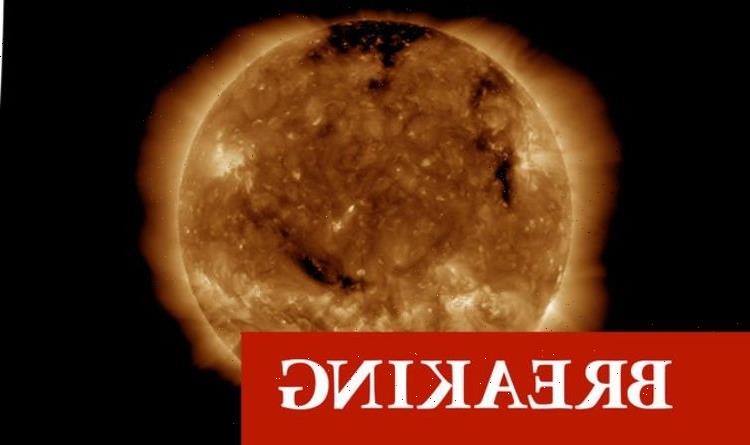Earth’s ‘magnetic song’ captured during solar storm
We use your sign-up to provide content in ways you’ve consented to and to improve our understanding of you. This may include adverts from us and 3rd parties based on our understanding. You can unsubscribe at any time. More info
A so-called coronal mass ejection (CME) was seen escaping the Sun on Wednesday and may deliver a “glancing blow” to the planet. CMEs are large clouds of charged particles and magnetic field from the Sun that stream from the Sun’s corona – the outermost layer of the star’s atmosphere. According to the US Space Weather Prediction Center, CMEs can reach the planet at speeds between 250 km per second and 3,000 km per second.
Astronomers at SpaceWeather.com have now warned yesterday’s CME could reach the planet by Saturday.
The warning comes after a large filament erupted from the Sun’s southern hemisphere.
The filament split the Sun’s atmosphere wide open and released a cloud of debris into space.
The website’s astronomers wrote: “Imagine a canyon 50,000 miles long with towering walls of red-hot plasma.

“Yesterday, there was one on the Sun.
“It formed when a filament of magnetism lifted off from the southern hemisphere.
“The erupting filament split the sun’s atmosphere, carving out the canyon as it ascended.
“The glowing walls remained intact for more than six hours after the explosion.”
The debris trailing from the blast was photographed by NASA’s STEREO-A spacecraft and the Solar and Heliospheric Observatory (SOHO).

Space Weather added: “First-look data suggest it might deliver a glancing blow to Earth’s magnetic field on November 28.”
When CMEs interact with the Earth’s magnetosphere – the region of space dominated by Earth’s magnetic field – they may induce a geomagnetic storm (solar storm).
The SWPC explained: “A geomagnetic storm is a major disturbance of Earth’s magnetosphere that occurs when there is a very efficient exchange of energy from the solar wind into the space environment surrounding Earth.
“These storms result from variations in the solar wind that produces major changes in the currents, plasmas, and fields in Earth’s magnetosphere.”
The strongest solar storms are typically associated with the arrival of a CME.
And depending on the CME’s strength, scientists will rank the resulting storm on a scale of “G1 Minor” to “G5 Extreme”.
At the low end of the scale, Minor storms can cause some disturbance to satellite operations and weak power grid fluctuations may occur.
At the top of the scale, Extreme storms can cause “widespread voltage control problems” and power blackouts.
This is a breaking story. Refresh the page to see more.
Source: Read Full Article
